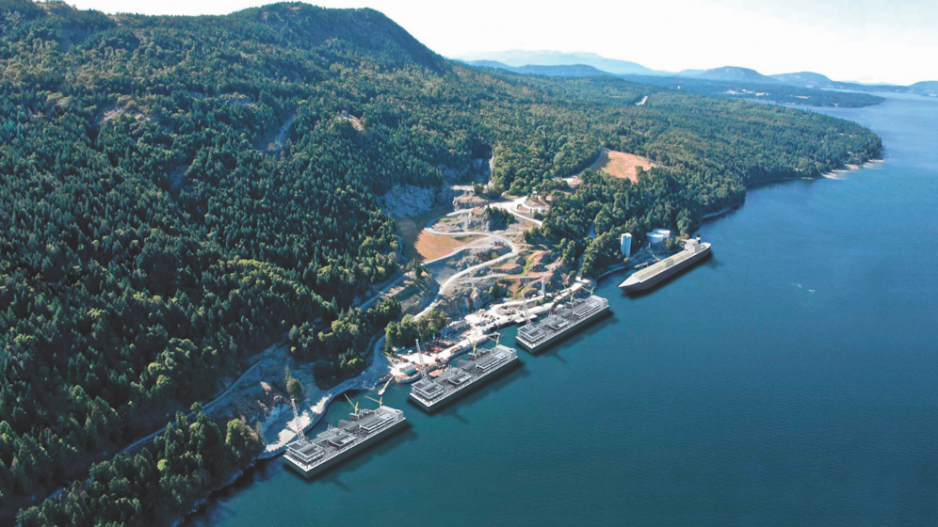Of the nearly two dozen liquefied natural gas projects proposed for B.C., Steelhead LNG’s multibillion-dollar plan for two liquefied natural gas plants on Vancouver Island and a resurrection of the contentious Georgia Strait Crossing pipeline would appear to be one of the more distant long-shots.
Building a natural gas pipeline running under water from Washington state to Vancouver Island was tried before and met strenuous pushback from environmental and community groups.But at least one serious player in Alberta is taking an interest in Steelhead’s plans, and Steelhead LNG CEO Nigel Kuzemko says key Vancouver Island First Nations are on board.
Last week, Seven Generations Energy Ltd. (TSX:VII), an Alberta natural gas producer with a $10.6 billion market cap, announced it is taking a small stake in Steelhead LNG.
“This agreement with Steelhead LNG is not exclusive,” said Seven Generations COO Marty Proctor. “We are in discussions with a variety of LNG export proponents and other potential industrial, commercial and residential consumers.”
Seven Generations has assets on the Alberta side of the liquids-rich Montney formation and is looking for ways to market some of its natural gas outside of North America.
Kuzemko would not say how big a Steelhead stake Seven Generations is taking, although he said it was “a significant minority stake.”
Steelhead LNG also has a pre-construction agreement with Williams Companies Inc. (NYSE:WMB) to resurrect the old GSX pipeline proposal – now called the Island Gas Connector – and has signed agreements with the Huu-ay-aht First Nation on the Island’s west coast and the Malahat First Nation on Mill Bay’s west side. Steelhead proposes to build two LNG plants – a 24-million-tonne plant at Sarita Bay on the Island’s west coast and a smaller six-million-tonne plant at Bamberton. Both would have at-shore LNG plants, meaning they would be on the water, not on land.
The smaller Bamberton plant would produce three times the volume of LNG as the Woodfibre LNG plant in Squamish (2.1 million tonnes annually).
Steelhead LNG initially estimated the Sarita Bay plant would cost $30 billion.
Depending on the scale of the initial plant, Kuzemko said the natural gas could come from existing natural gas pipelines.
“If we go to our maximum buildout, we will need a new pipeline.”
Kuzemko added that the company would likely not file a project description with the Canadian Environmental Assessment Agency until 2017. The project’s plans aren’t fully in place yet because the company plans to do all its consultation with First Nations upfront.
“We feel having an organization like Seven G, which is looking to push the gas out, and us that’s looking to pull it, we think we’ve got both ends of it now,” Kuzemko said. “But what we must do, before we make any serious investment, is fully understand all the requirements of First Nations along that route.
“We want to involve First Nations in the pipeline themselves. Hopefully, they can even have equity in the pipeline, which would be fantastic.”
Although the natural gas would come from Alberta and northeastern B.C., it would make its way to Vancouver Island via Sumas, Washington.
The GSX routing is already well understood, Kuzemko said, and had been approved by the National Energy Board. That pipeline proposal was tied with the Duke Point Power plant that BC Hydro planned to have built in Nanaimo. But the GSX project died in 2005, when stiff opposition convinced Hydro to abandon the Duke Point Power project. •




